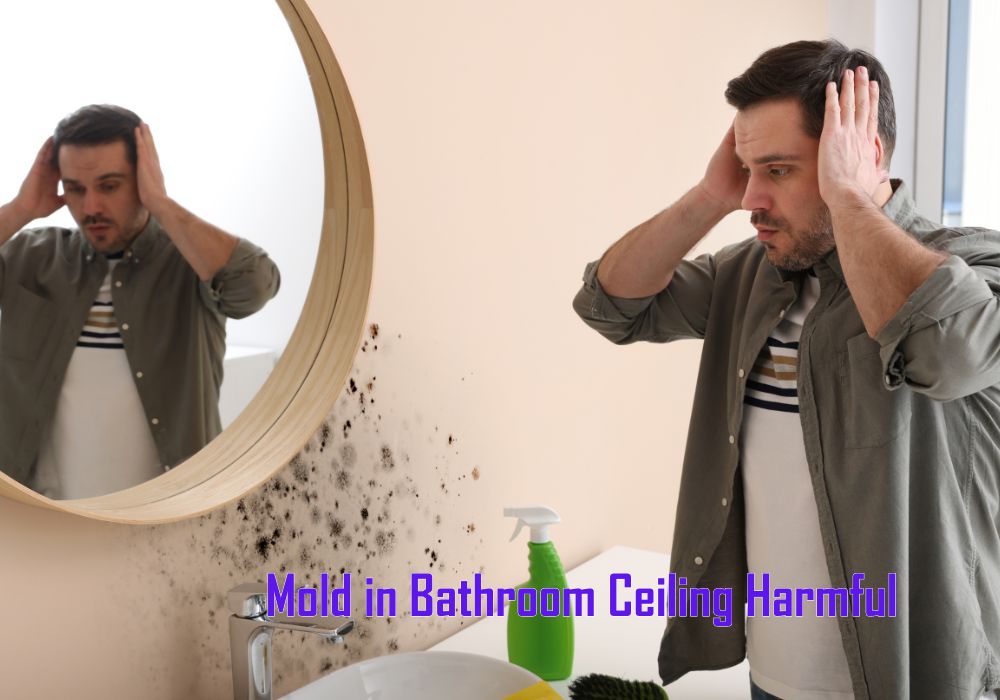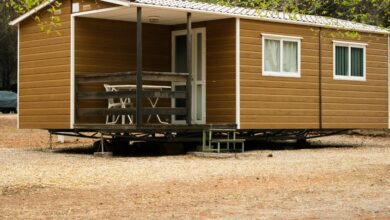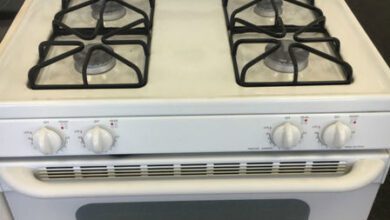Mold in Bathroom Ceiling Harmful

Mold in the bathroom ceiling can be harmful to your health and should be addressed immediately. Exposure to mold in the bathroom ceiling can pose serious health risks to you and your family.
In addition to causing allergies and respiratory problems, mold releases harmful spores into the air that can lead to chronic issues like asthma and lung infections. The high humidity and moisture levels present in bathrooms create an ideal breeding ground for mold growth.
If left untreated, mold can spread rapidly, compromising the structural integrity of your ceiling and causing expensive damage. It is crucial to take prompt action by identifying the source of the mold and implementing effective remediation methods to ensure a safe and healthy living environment.
The Impact Of Mold On Health
Mold in bathroom ceilings can pose serious health risks, causing respiratory problems, allergies, and even infections. It’s important to address the issue promptly to safeguard your well-being.
Mold is not only an unsightly nuisance but can also have serious implications for our health. Exposure to mold, especially in bathroom ceilings, can lead to a range of health issues. Understanding the impact of mold on our health is crucial for taking necessary preventive measures.
Symptoms Of Mold Exposure
Exposure to mold can result in various symptoms that can range from mild to severe. These symptoms often mimic common respiratory allergies, making it important to identify the underlying cause. Some common symptoms of mold exposure include:
- Nasal congestion: This is one of the initial signs of mold exposure, which can cause discomfort and difficulty in breathing.
- Sneezing and coughing: Mold spores irritate the nasal passages and throat, triggering frequent sneezing and a persistent cough.
- Itchy, watery eyes: Mold exposure can lead to red, itchy, and watery eyes, similar to allergies caused by other triggers.
- Skin irritation: Direct contact with mold can cause skin rashes, itchiness, and inflammation.
Respiratory Issues Associated With Mold Exposure
Exposure to mold can have a significant impact on respiratory health. The spores released by mold can be inhaled and affect the respiratory system, leading to:
- Asthma symptoms: Mold spores can trigger asthma attacks in individuals with asthma or worsen existing symptoms.
- Bronchitis: Prolonged exposure to mold can cause inflammation in the bronchial tubes, resulting in bronchitis.
- Allergic reactions: Some individuals may develop allergic reactions like wheezing, shortness of breath, and tightness in the chest when exposed to mold.
- Respiratory infections: Mold can weaken the immune system, making individuals more susceptible to respiratory infections, such as pneumonia.
To prevent these health issues, it is important to address mold growth promptly and take necessary precautions to keep the bathroom ceiling dry and well-ventilated. Regular cleaning and maintenance can help prevent mold growth and maintain a healthy environment.
Identifying Mold In Bathroom Ceiling
Mold in the bathroom ceiling can be harmful to your health. Identify and address it promptly to prevent further damage and ensure a safe environment for you and your family.
Signs Of Mold Growth In The Bathroom
Mold growth in the bathroom ceiling can be unsightly and, more importantly, potentially harmful to your health. Identifying the presence of mold is crucial in order to take appropriate action to remove it and prevent further damage. Keep an eye out for the following signs that indicate the presence of mold in your bathroom ceiling:
- Dark spots or discolorations: If you notice any dark spots or discolorations on your bathroom ceiling, it could be a sign of mold growth. These spots may appear green, black, or even white.
- Musty odor: Mold often has a distinct musty smell. If you detect a musty odor, especially in your bathroom, there is a high possibility that mold is present.
- Peeling or bubbling paint: Moisture from mold growth can cause the paint on your bathroom ceiling to peel or bubble. If you see any paint that is peeling or bubbling, it may be an indication of mold behind the surface.
- Allergic reactions: Mold can trigger allergic reactions in some individuals. If you experience symptoms such as sneezing, coughing, or itchy, watery eyes when you enter your bathroom, it could be a sign of mold growth.
Common Causes Of Mold Growth On The Ceiling
Understanding the common causes of mold growth on the bathroom ceiling is essential in order to prevent its recurrence. Here are some factors that contribute to the growth of mold on bathroom ceilings:
- Moisture buildup: Bathrooms are often humid environments, prone to high moisture levels. Moisture buildup from showers, baths, or even inadequate ventilation can create the perfect breeding ground for mold.
- Leaky plumbing: A leaky pipe or plumbing fixture in the bathroom can create continuous moisture, providing an ideal environment for mold to thrive.
- Lack of ventilation: Poor ventilation in the bathroom traps moisture inside, increasing the chances of mold growth. Insufficient airflow prevents damp areas from drying out, promoting mold development.
- Roof or plumbing leaks: If there are existing leaks in the roof or plumbing system above the bathroom, water can seep into the ceiling, leading to mold growth over time.
- Lack of regular cleaning: Neglecting regular cleaning and maintenance of the bathroom can contribute to mold growth. Mold spores can accumulate in areas like the ceiling, especially when dust, soap scum, or other debris provide a food source.
By familiarizing yourself with the signs of mold growth and understanding the common causes, you can take proactive measures to identify and address any mold issues in your bathroom ceiling promptly. This will help ensure a healthier and mold-free environment for you and your family.
Potential Hazards Of Mold In Bathroom Ceiling
Discover the potential hazards of mold lurking in your bathroom ceiling. This harmful presence can not only compromise the integrity of your ceiling but also pose health risks for you and your family. Take action today to address this issue and create a healthy living environment.
Mold in the bathroom ceiling is not just an unsightly issue; it can also pose potential hazards to both the structural integrity of your home and the quality of the air you and your family breathe. Understanding these risks is crucial in order to take the necessary steps to prevent and address mold growth effectively.
In this section, we will explore the potential hazards of mold in the bathroom ceiling, specifically focusing on the structural damage it can cause and its impact on indoor air quality.
Structural Damage Caused By Mold:
- Mold thrives in moist environments, making the bathroom ceiling an ideal breeding ground. When left unaddressed, mold can lead to significant structural damage, compromising the integrity of your home. Here are the potential hazards to be aware of:
- Weakening of structural materials: Mold can eat away at the organic matter it grows on, such as drywall and ceiling tiles. Over time, this can cause the materials to weaken, warp, and deteriorate, potentially leading to sagging ceilings or even collapse in severe cases.
- Damage to paint and coatings: Mold growth in the bathroom ceiling can cause peeling, discoloration, and blistering of paint and coatings. This not only affects the aesthetic appeal of your bathroom but can also indicate underlying structural damage.
- Impaired insulation: Mold can infiltrate and damage insulation materials, reducing their effectiveness. As a result, you may experience poor energy efficiency, temperature fluctuations, and higher utility bills.
- Leaks and water damage: Mold growth often indicates the presence of moisture and water infiltration. If left unchecked, this can create leaks and further water damage, exacerbating the structural issues caused by mold.
Impact On Indoor Air Quality:
- Mold in the bathroom ceiling can significantly impact the air quality inside your home. As mold spores are released into the air, they can be inhaled, triggering respiratory problems and allergic reactions. Here’s what you need to know:
- Respiratory issues: Mold spores can irritate the respiratory system, leading to symptoms such as coughing, sneezing, wheezing, and shortness of breath. Individuals with asthma or allergies may experience more severe reactions.
- Allergic reactions: Exposure to mold spores can trigger allergic reactions in susceptible individuals. Symptoms may include nasal congestion, itchy or watery eyes, skin rashes, and worsened asthma symptoms.
- Increased risk of respiratory infections: Prolonged exposure to mold can weaken the immune system, making individuals more susceptible to respiratory infections, such as bronchitis or pneumonia.
- Foul odor: Mold growth often produces a musty odor that can permeate throughout your home, causing discomfort and affecting the overall indoor air quality.
Mold in the bathroom ceiling can have significant negative effects on both your home’s structure and the air you breathe. Taking proactive measures to prevent mold growth and addressing it promptly when detected is crucial to maintaining a healthy and safe living environment for you and your family.
Remember to consult professionals for proper remediation and prevention methods.
Moisture Control And Prevention Tips
Prevent harmful mold growth on your bathroom ceiling with these moisture control tips. Keep the area well-ventilated, repair any leaks or water damage promptly, and regularly clean and dry the surface to discourage mold formation.
Proper Ventilation In The Bathroom
One of the most effective ways to control moisture and prevent mold growth in your bathroom is by ensuring proper ventilation. Adequate ventilation helps to expel moist air and prevent it from lingering in the room, reducing the risk of mold formation.
Here are a few tips to consider:
- Install an exhaust fan: A ventilation fan helps in removing humid air from the bathroom. Make sure the fan is properly sized for the room and vented to the outside, not just into the attic.
- Keep the fan on: Remember to leave the exhaust fan running during and after showers or baths to allow excess moisture to be eliminated.
- Open windows: If your bathroom is equipped with a window, open it while showering or bathing to improve air circulation and reduce humidity.
Regular Inspection For Leaks And Water Damage
Detecting leaks and water damage early on can prevent mold growth and save you from costly repairs down the line. Regular inspections are essential to identify any potential sources of moisture. Consider these tips when inspecting your bathroom:
- Check for leaks: Inspect your bathroom fixtures, such as faucets, pipes, and toilets, for any signs of leaks. Look for water stains or pooling water around these areas.
- Inspect caulking and grout: Inspect the caulking and grout around your tub, shower, and sink to ensure they are intact and in good condition. Cracked or deteriorated caulking and grout can allow water to seep in, promoting mold growth.
- Look for water damage: Check for any signs of water damage on the ceiling, walls, and floor. Look for discoloration, bubbling, soft spots, or peeling paint, as these can indicate water intrusion.
By following these moisture control and prevention tips, you can effectively minimize the risk of mold growth in your bathroom ceiling. Regular inspections, coupled with proper ventilation, will help keep your bathroom dry and mold-free, promoting a healthier environment for you and your family.
Effective Mold Removal Methods
Effectively removing mold from your bathroom ceiling is crucial as it can be harmful to your health. Explore practical mold removal methods to ensure a safe and clean living space.
Mold in the bathroom ceiling can be a serious problem that needs immediate attention. Not only is it unsightly, but it can also pose health risks. If you’re dealing with a mold issue in your bathroom, here are some effective mold removal methods you can consider.
Diy Methods For Mold Removal:
- Inspect the affected area: Before getting started, thoroughly inspect the bathroom ceiling to identify the extent of the mold growth. This will help you determine the appropriate method for removal.
- Protect yourself: Mold spores can cause allergic reactions and respiratory issues, so it’s vital to protect yourself before starting the removal process. Wear gloves, goggles, and a mask to avoid direct contact with the mold.
- Clean with vinegar: Vinegar is known for its natural antimicrobial properties, making it an effective mold remover. Mix equal parts vinegar and water in a spray bottle and spray it directly on the affected areas. Let it sit for a few hours, then wipe clean with a damp cloth.
- Use hydrogen peroxide: Another DIY option is using hydrogen peroxide, which is effective in killing mold spores. Mix a 3% hydrogen peroxide solution with water and spray it onto the affected area. Let it sit for 10-15 minutes, then scrub away the mold using a brush.
- Baking soda and water paste: Baking soda is a mild, non-toxic cleaner that can be used to remove mold. Create a paste by mixing baking soda with water and apply it to the affected areas. Let it dry, then scrub the mold away with a brush or sponge.
- Improve ventilation: Moisture is a major factor in mold growth, so it’s crucial to improve ventilation in your bathroom. Use exhaust fans or open windows to allow proper air circulation, reducing the chances of mold regrowth.
Hiring Professionals For Mold Remediation:
While DIY methods can be effective for small mold issues, larger or recurring mold problems might require professional help. Here’s why you might consider hiring professionals for mold remediation:
- Expertise and knowledge: Professionals have the experience and expertise to assess the extent of the mold problem and develop an appropriate plan for removal. They can effectively identify the root cause and provide long-term solutions.
- Advanced equipment: Professionals have access to specialized equipment that can detect hidden mold growth and ensure thorough removal. They can also employ advanced techniques like HEPA vacuuming and air filtration to eliminate mold spores in the air.
- Safety precautions: Mold remediation can involve the use of potentially harmful chemicals. Professionals are trained in handling these substances safely, ensuring the health and safety of both themselves and the occupants of the house.
- Prevention strategies: In addition to mold removal, professionals can provide valuable advice on preventing future mold growth. They can recommend measures to control moisture levels, improve ventilation, and address any underlying issues causing the mold problem.
By following these effective mold removal methods, you can tackle the mold issue in your bathroom ceiling and create a healthier environment. Whether you choose to DIY or hire professionals, addressing mold promptly is crucial for the well-being of your home and its occupants.
Maintaining A Healthy Bathroom Environment
Maintaining a healthy bathroom environment includes addressing the issue of mold in the ceiling, as it can be harmful to both the household and the overall air quality. Regular cleaning, proper ventilation, and moisture control are essential to prevent the growth of mold and ensure a safe and hygienic bathroom
A clean and well-maintained bathroom is essential for a healthy living environment. Mold growth in the bathroom ceiling not only ruins the aesthetics of your bathroom but can also pose serious health risks. To prevent mold growth and maintain a healthy bathroom environment, it is important to follow proper cleaning and maintenance practices, as well as implement some best practices for preventing future mold issues.
Read on to learn more:
Cleaning And Maintenance Practices To Prevent Mold Growth:
- Regularly clean the bathroom ceiling using an effective mold-resistant cleaner: To prevent mold from taking hold, clean your bathroom ceiling at least once a month with a mold-resistant cleaner. This will help remove any existing mold spores and prevent their growth.
- Ensure proper ventilation in the bathroom: Lack of proper ventilation can lead to high humidity levels in the bathroom, creating an ideal environment for mold to thrive. Use exhaust fans or open windows to improve air circulation and reduce humidity levels.
- Fix any water leaks promptly: Water leaks can contribute to mold growth in the bathroom. Regularly check for and fix any leaks in pipes, faucets, or showerheads. Additionally, ensure that the bathroom fixtures are tightly sealed to prevent water from seeping into the ceiling.
- Dry the bathroom after each use: Moisture is the main culprit behind mold growth. After every shower or bath, wipe down the bathroom surfaces, including the ceiling, to remove any excess moisture. This will help prevent mold from finding a damp environment to grow in.
Best Practices For Preventing Future Mold Issues In The Bathroom:
- Use mold-resistant paint on the bathroom ceiling: Applying mold-resistant paint on the bathroom ceiling adds an extra layer of protection against mold growth. Look for paints specifically designed to resist mold and mildew.
- Install a dehumidifier in the bathroom: A dehumidifier can help maintain optimal humidity levels in the bathroom, reducing the risk of mold growth. Consider installing a small dehumidifier in your bathroom to keep the moisture levels in check.
- Regularly inspect the bathroom for signs of mold: Prevention is always better than cure when it comes to mold issues. Regularly inspect the bathroom, especially the ceiling, for any signs of mold growth. If you spot any, take immediate action to remove it and address the underlying cause.
- Remove excessive clutter from the bathroom: Clutter can hinder proper airflow and make it difficult to clean the bathroom effectively. Keep the bathroom clutter-free to ensure better ventilation and easier cleaning.
- Use mold-resistant materials for bathroom fixtures: When renovating or upgrading your bathroom, opt for mold-resistant materials, such as mold-resistant drywall and caulk. These materials are specifically designed to inhibit mold growth.
By implementing these cleaning and maintenance practices, as well as following these best practices, you can significantly reduce the risk of mold growth in your bathroom ceiling. Remember, prevention is key when it comes to maintaining a healthy bathroom environment.

Credit: www.bobvila.com
Frequently Asked Questions For Mold In Bathroom Ceiling Harmful
Why Does Mold Grow On Bathroom Ceilings?
Mold grows on bathroom ceilings due to high humidity levels, poor ventilation, and water leaks. When warm, moist air condenses on a cool surface like the ceiling, it creates a perfect breeding ground for mold spores to thrive.
Is Mold In The Bathroom Ceiling Dangerous?
Yes, mold on the bathroom ceiling can pose health risks. Breathing in mold spores can cause allergies, respiratory problems, and even infections in some cases. It is important to address mold growth promptly to prevent further health issues.
How Can I Prevent Mold Growth On My Bathroom Ceiling?
To prevent mold on your bathroom ceiling, ensure proper ventilation by using an exhaust fan or opening a window during and after showers. Fix any plumbing leaks immediately, wipe down surfaces regularly, and use mold-resistant paint or wallpaper.
Conclusion
Having mold in your bathroom ceiling can pose serious health risks and should not be ignored. Mold growth occurs due to excess moisture and poor ventilation, creating the perfect breeding ground for harmful spores. These spores can be inhaled and may cause respiratory problems, allergies, or even more severe health issues.
It is crucial to address and eliminate the underlying cause of mold growth to prevent its recurrence and ensure a healthy living environment. Regular cleaning and maintenance, along with proper ventilation, can help keep your bathroom mold-free. Additionally, if mold is already present, it is advisable to seek professional help to effectively remove it and prevent further damage.
Remember, the health and safety of you and your family are paramount, so take mold in your bathroom ceiling seriously and take appropriate action to safeguard your well-being.










